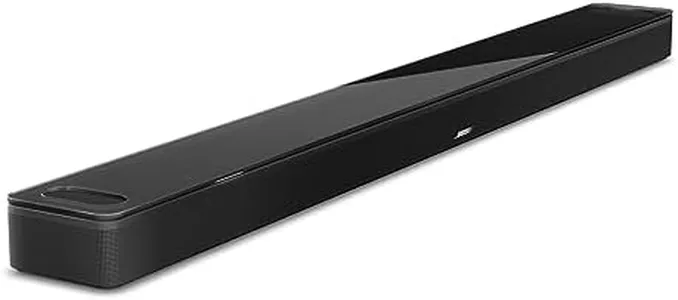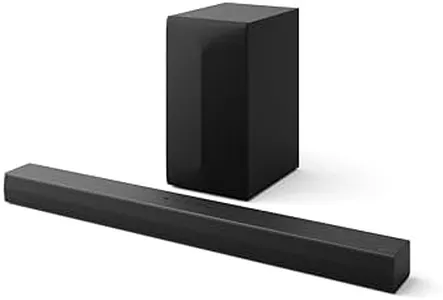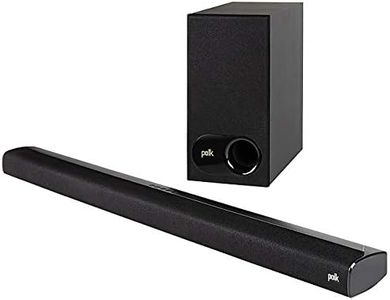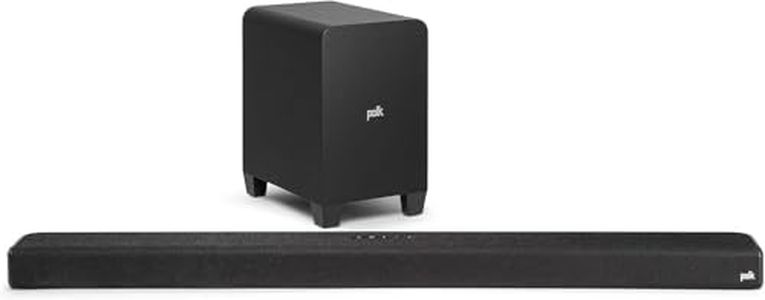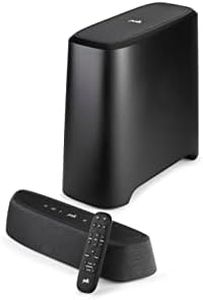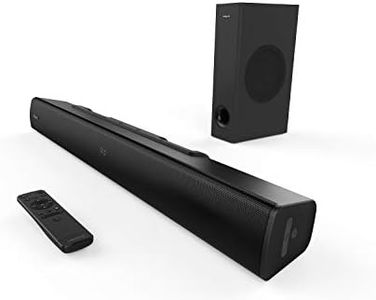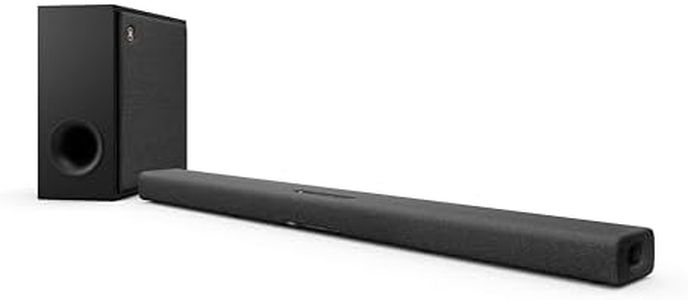We Use CookiesWe use cookies to enhance the security, performance,
functionality and for analytical and promotional activities. By continuing to browse this site you
are agreeing to our privacy policy
10 Best TV Soundbar
From leading brands and best sellers available on the web.Buying Guide for the Best TV Soundbar
Choosing the right TV soundbar is all about enhancing your TV’s audio performance to suit your needs and room setup. A soundbar can bring clearer dialogue, deeper bass, and a more immersive sound experience compared to your TV’s built-in speakers. When shopping for a soundbar, it’s important to look at a few key features that directly impact how well it will fit into your living space and how it sounds. Thinking about where you'll place it, how you'll connect it, and the type of content you enjoy most will also guide you towards the best choice.ChannelsChannels refer to the number of separate audio outputs in the soundbar, such as 2.1, 3.1, or 5.1. The first number is the main channels (speakers) – a higher number usually means more directional or fuller sound. The '.1' refers to whether the system includes a subwoofer for bass. A 2.0 or 2.1 channel is ideal for smaller rooms or for improving basic TV audio, while 3.1 adds a center channel that boosts dialogue clarity. 5.1 systems imitate surround sound, great for movie lovers or larger rooms. Pick the channel configuration that fits the size of your room and the depth of sound you want. If you watch lots of movies or action shows, more channels can provide a larger, more immersive soundscape. If you mostly watch the news or sitcoms, simpler setups often suffice.
Connectivity OptionsConnectivity describes how the soundbar connects to the TV and other devices. The main options are HDMI ARC/eARC, optical audio, Bluetooth, and Wi-Fi. HDMI ARC/eARC is the most modern and versatile, allowing high-quality sound and control with one cable, while optical is a reliable backup if your TV doesn’t support HDMI ARC. Bluetooth and Wi-Fi let you stream music wirelessly. When choosing, consider what your TV supports and whether you want to stream music from your phone or computer. For everyday TV use, a simple HDMI or optical cable is easy and effective. If you like streaming music or using voice assistants, Wi-Fi or Bluetooth support might be important.
Size and PlacementThe size of the soundbar should match your TV and fit your room layout. Soundbars come in various lengths – some match the width of the TV, while others are compact. A soundbar that’s too large can overwhelm a small TV, while a tiny one might look out of place with a very large screen. Think about whether the soundbar will sit on a shelf, attach to the wall, or fit under your TV. Measure your TV stand or wall space before shopping to make sure you have a good visual and physical fit. Room size can also matter, as bigger rooms may benefit from larger soundbars to fill the space with sound.
SubwooferA subwoofer is a speaker specifically for low, deep sounds – the 'bass.' Some soundbars come with a separate wireless or wired subwoofer, while others have built-in subwoofers. If you enjoy movies, games, or music with strong bass effects, a soundbar with a separate subwoofer will give you a richer experience. For smaller rooms, or if deep bass isn’t important, built-in solutions are usually sufficient and save space. Think about your audio preferences and room space when deciding on adding a subwoofer.
Sound Modes and FeaturesMany soundbars offer preset sound modes, such as Movie, Music, or Voice, which automatically adjust settings to suit what you’re watching. Features like dialogue enhancement make spoken words clearer, and virtual surround can create a more immersive experience by imitating surround sound with fewer speakers. If multiple people will watch TV or you have trouble hearing dialogue, prioritize models with these specialized modes. Consider what you watch most and if such modes will improve your enjoyment or clarity.
